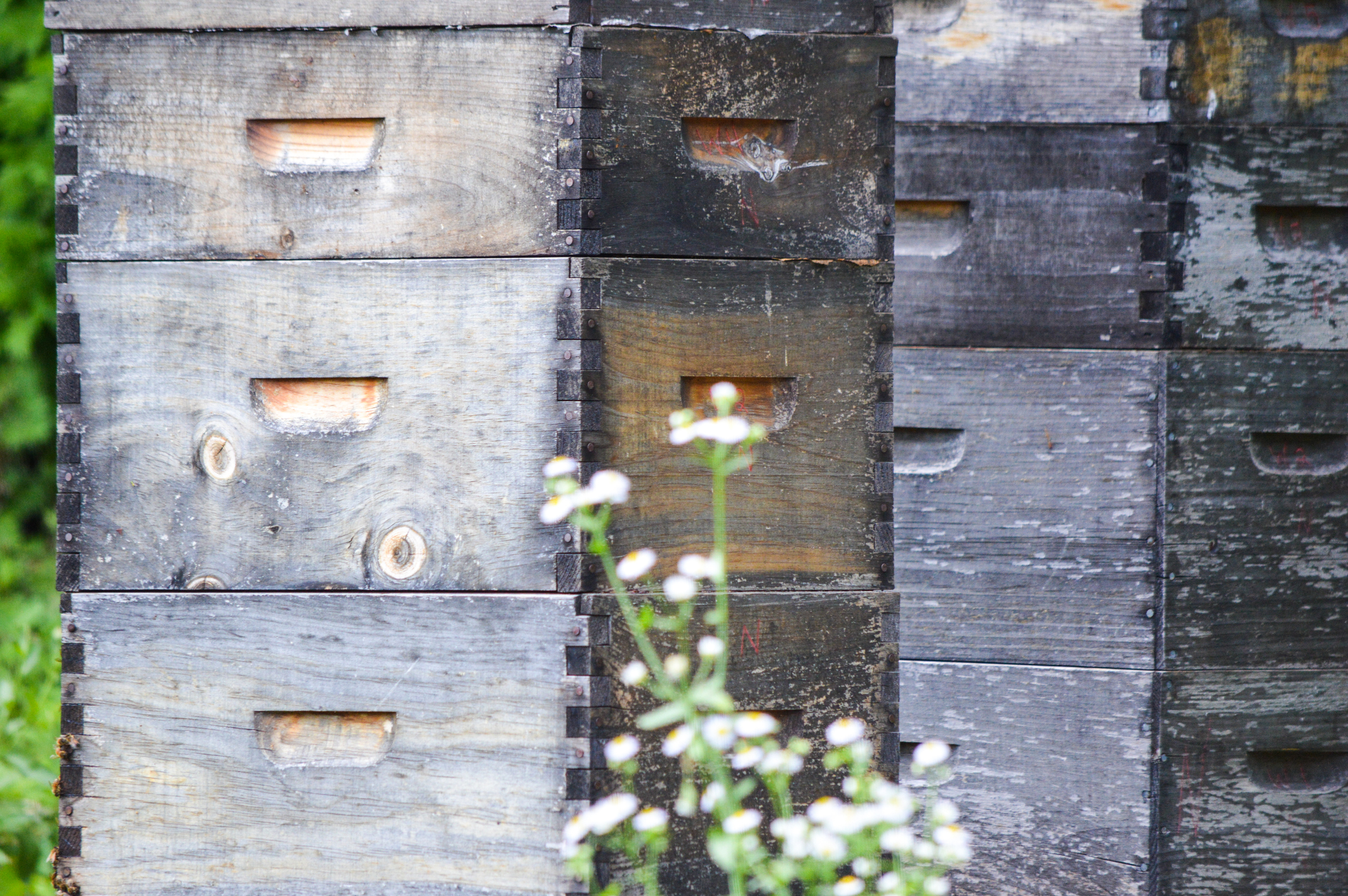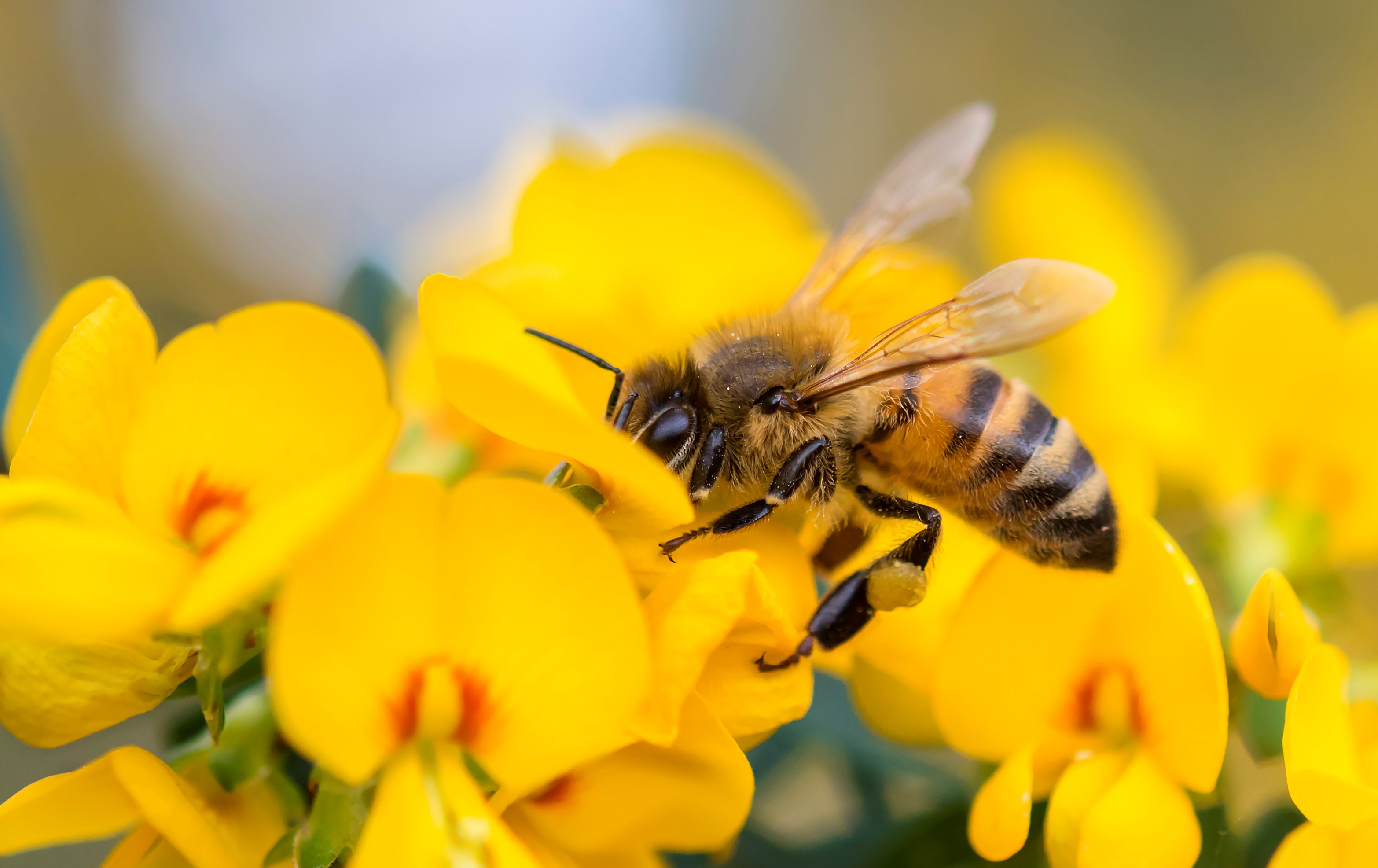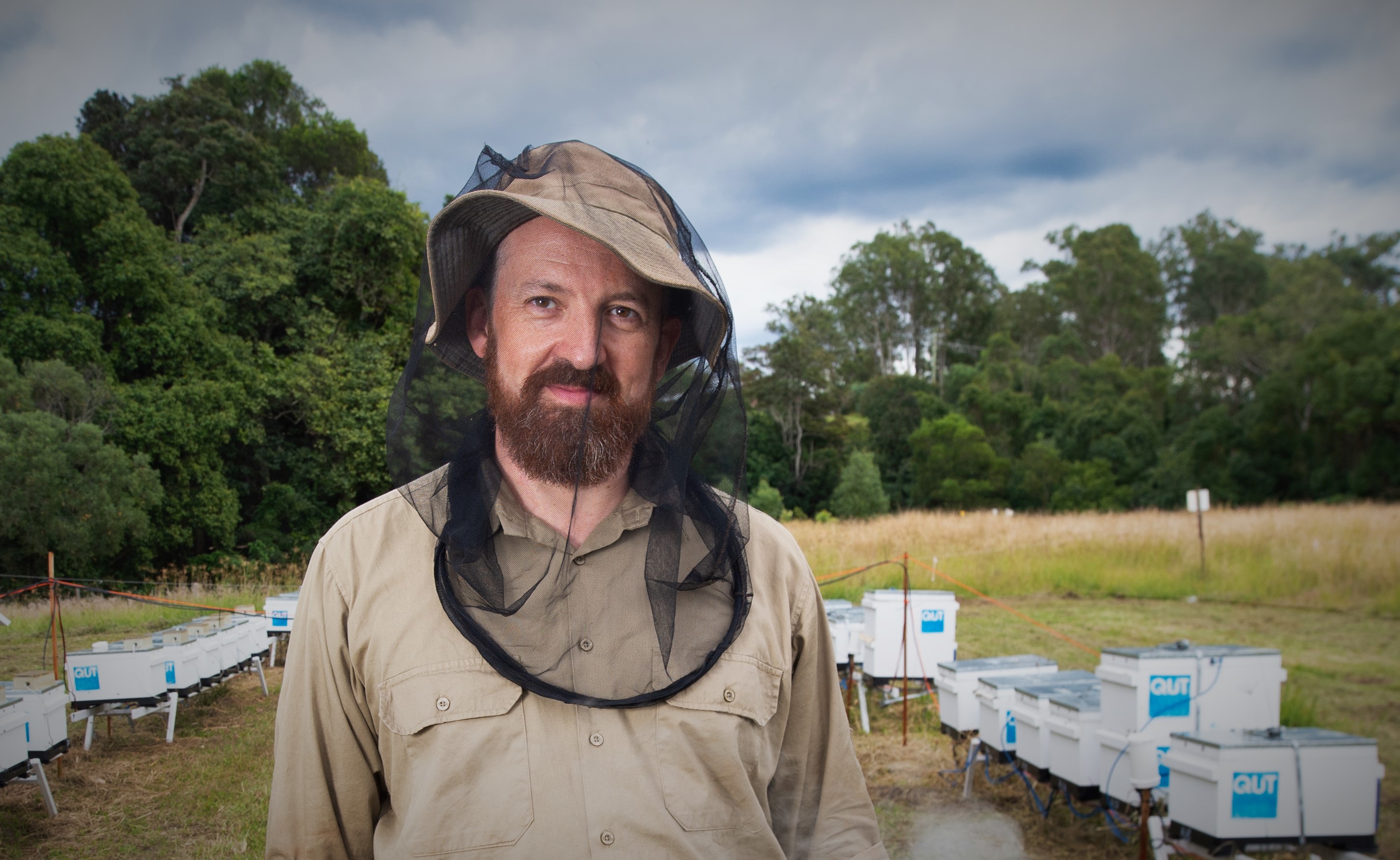New QUT research has identified just how much work honey bees put into keeping their beehives a balmy 35 degrees year-round – and how changes to hive design and better beekeeping practices could save them valuable time and energy.
PhD researcher Dan Cook, from the QUT Design Lab and the Centre for Agriculture and the Bioeconomy, has spent the past three years doing "bee-centric" postgraduate research investigating how bees experience the honey and pollination industries and what humans can do to help bees maximise the time they spend doing essential work.
Honey bees like to stay warm all year, but the most common commercial beehive used today in Australia, New Zealand and the United States is a timber box system designed in the 1850s that is not thermally efficient.
Mr Cook, who is a QUT industrial design graduate and amateur beekeeper, has found that honey bees need to spend up to 80,000 'bee-minutes' warming a hive back up to its ideal 35 degrees Celsius after its micro-climate is disturbed by beekeepers.
He says improvements to hive design – such as more insulation and better sealed lids – could help reduce the amount of time and energy needed. So could picking warmer days to open the hives.
"Most agriculture industries have evolved over time, but beekeeping hasn't really changed in 170 years," Mr Cook said.
"Our hive experiments in QUT labs showed how thermally inefficient Langstroth hives are, and how much energy bees have to expend to keep the inside of the hive at their optimal temperature of 35 degrees.
"Honey provides thermal mass in the beehive, acting as a thermal buffer to external temperature change.
"Removing the honey, particularly in a cool wind or on a rainy day, makes the bees invest extra work as 'heater bees' – bees that vibrate their wing muscles to raise their body temperature and warm the brood.
"This diverts workers away from other essential tasks, like foraging for nectar, pollen and water."
Mr Cook's research has been published in the Journal of Economic Entomology, in the article Thermal Impacts of Apicultural Practice and Products on the Honey Bee Colony.
In it, the authors coin the term "bee-minutes" as a new way to measure bees' energy expenditure and show the industry how much time certain tasks take, such as regulating a hive's micro-climate.
"Bee-minutes are literally the number of minutes it takes a bee to do heating work," Mr Cook said.
"A task can take one bee 100 minutes – or take 100 bees one minute. Either way, 100 'bee-minutes' is an easy and accurate way to express this time."

Mr Cook's research recommendations include thermal improvements to the hive such as more insulation and better sealed lids, an ergonomic improvement to help beekeepers' backs, and practice improvements that pay more attention to the weather.
"Handles would be a great addition as, stock standard, these hives just have finger holds cut out and are very heavy – up to 35kg – and awkward to lift," he said.
"And the traditional '10-frame' Langstroth hive only comfortably fits nine frames. Ten frames is too tight and risks squashing bees or even the queen.
"Polystyrene hives are more thermally efficient but commercial beekeepers often prefer wood because it lasts longer.
"The industry is not going to change overnight but there are two easy things beekeepers can do now to make life easier for their bees.
"The first is to swap out their 'standard' lids and replace them with a thicker lid that seals better and provides more insulation.
"The second is to choose the warmest day possible to work on the hives.
"The process of adding comb frames, known as supering, creates a lot of work for bees to warm the expanded hive – especially if the comb is cool from refrigeration, transport or just a cold day. We found that adding the super on a warm day, rather than a cool day, could save up to three times the amount of heating energy by the bee colony."
Mr Cook is continuing his research at the new QUT Research Apiary, at the QUT Samford Ecological Research Facility north-west of Brisbane, with funding from Hort Innovation.
Australia has about 1800 commercial beekeepers and 28,000 recreational beekeepers.

A bee's life:
- Worker bees are all female and only live about 6 weeks
- Male drones live about 3 months
- The queen bee lives about 5 years
- The queen can choose the sex of the eggs she lays and creates more females when there's more work to be done, and more males during breeding times
- Worker bees move through dedicated jobs during their short lifetime. They start as cleaners and nursemaids looking after the larvae, move on to do heating or cooling work, transfer nectar around the hive and make wax, and are then allowed out to forage for pollen.
- 'Heater bees' vibrate their wing muscles to create friction and heat during cold weather
- 'Fanning bees' regurgitate water droplets and fan them to create an aircon effect during hot weather

About Dan Cook:
Dan worked in the music industry in the UK as a lighting designer and technician with artists including Moby and Spandau Ballet, before moving to Australia in 2006. He completed a Bachelor of Industrial Design (Honours) in 2017 at QUT, while working in interaction electronics design for clients including GOMA and Queensland Theatre. He began studying bees during his honours year and did a vacation research experience scheme (VRES) in technology in beehives. He commenced his research PhD at QUT in 2018. His interest in bees started after he attended a "build a beehive" workshop and took his son along on a whim. He now has a few of his own hives at his Brisbane home.






